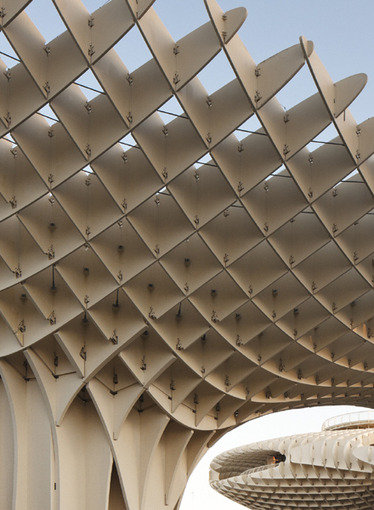Culture:City
dal 26/6/2013 al 9/10/2013
Segnalato da
26/6/2013
Culture:City
Kunsthaus Graz am Landesmuseum Joanneum, Graz
Cultural Buildings from Bilbao to Zeche Zollverein. The exhibition is conceived not only to offer the visitor a physical presentation of plans and models but also special involvement: iPads deliver images and facts as well as in-depth background information.

curated by and Matthias Sauerbruch, Wilfried Wang, Wulf Walter Boettger and Caroline Wolf
Cultural range and its physical ma
nifestation in the form of bui
ldings are the driving force and
content of innovative city development and pla
nning. These days, instead of churches and
castles, museums and opera houses, libraries an
d stadiums are found, pointing the way for cities
and their inhabitants in terms
of self-perception. Increasingly
they take on the function of
places of education, of fr
ee expression and
critical intervention, making
them decisive drivers of
urban development. Curated by Ma
tthias Sauerbruch, the exhibition
Culture:City
is devoted to
this phenomenon, shedding light
on the relation between architect
ure and daily reality - keeping
an eye out for the paradigm of the ‘Bilbao effe
ct’ without, however, restricting itself to it.
The exhibition confronts the grea
t architectural building forms as are familiar since the 1970s,
with civilian self-initiatives, with alternative an
d dynamic cultural and art projects in urban
districts or abandoned building
complexes.
Thus the Centre
Pompidou in Paris or the
Guggenheim Museum in Bilbao is set
against such projects as
2-3 Straßen
in the Ruhr region or
the Neighbour’s Initiative Detroit Soup. At the core
of the exhibition therefore are not only the
cities and architectural buildings,
but also the social changes
which trigger the projects.
Democracy and civil society are decisive factors
for reflection on the city of the future. The
selection of international examples
– from spectacular architectural and art projects to the
creative re-utilisation of empty-standing bui
ldings and urban areas, and to citizen-led initiatives
– open a panorama of culture tran
sformed into concrete. In so d
oing, this not only allows a
snapshot of the achievements, it equally enable
s individual cases to be a
ppraised and assessed:
to what extent the hopes of social
evolution through bui
lding-driven intervention could actually
be realised, with a productive moment ensuing.
The exhibition is conceived not only to offer th
e visitor a physical presentation of plans and
models but also special involv
ement: iPads deliver images and facts as well as in-depth
background information. To this
has been added, both in te
rms of contents and critique,
auteur
films of young graduates of the De
utsche Film- und Fernsehakadem
ie Berlin (German film- and TV academy, Berlin) on 17 of the 37 architectura
l projects. Thus the vi
sitor to the exhibition
receives three perspectives in one: that of the
architect, the curator and the critical author.
Following its presentation at the
Akademie der Künste, Berlin
, the exhibition will be shown at
the Kunsthaus Graz, as the latter finds itself
in a number of cultural buildings that also
demonstrate the boom in recent decades in
museums showcasing spectacular architecture.
Accompanying the exhibition an
d in collaboration with the
Technische Universität Graz
and the
HDA
(House of Architecture), there will be a series of
talks and discussions on the role of cultural
buildings, their needs and va
rious development strategies.
Matthias Sauerbruch has divide
d the 37 selected cultural buildings up into five thematic
chapters.
Image: Metropol Parasol (Detail), Sevilla, 2004-2011,
Photo: Fernando Alda
Press info:
Universalmuseum Joanneum presse@museum-joanneum.at
Opening: 27.06.2013, 6 p.m.
Kunsthaus Graz am Landesmuseum Joanneum
Space02, Lendkai 1, 8020 Graz



